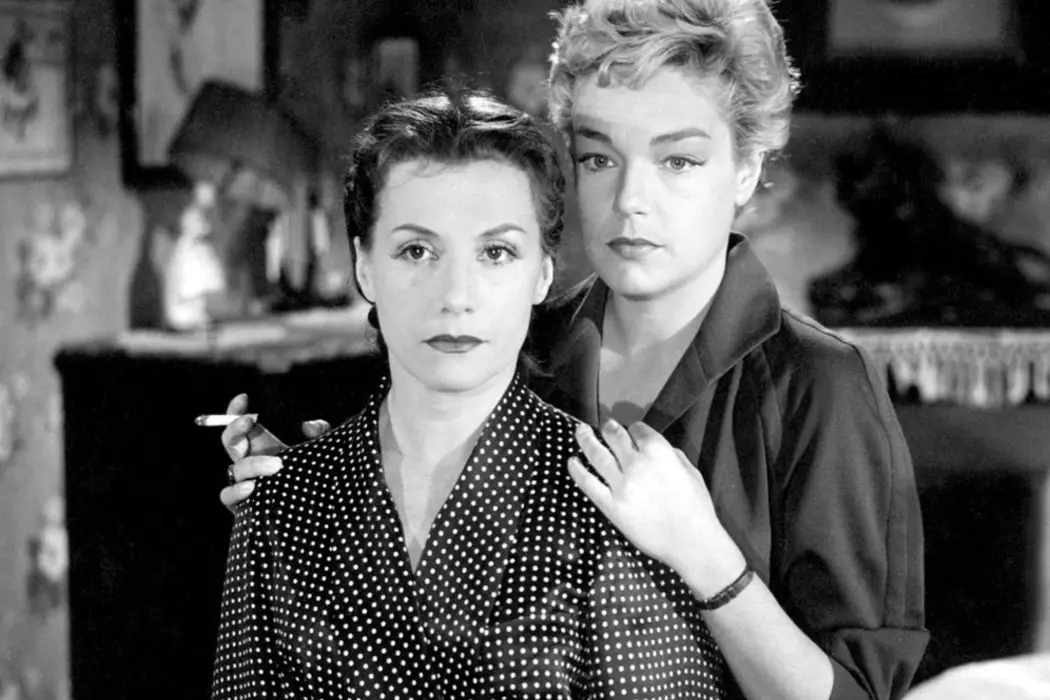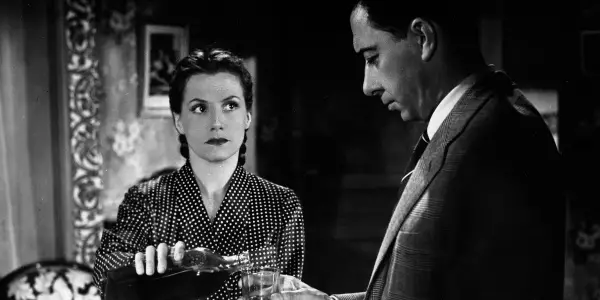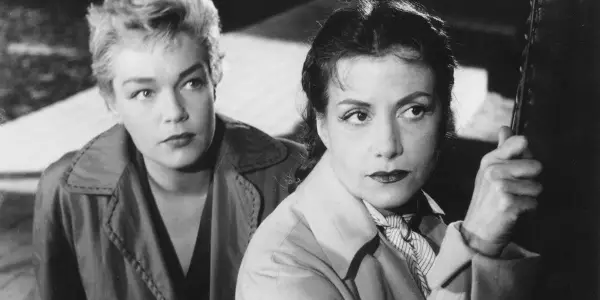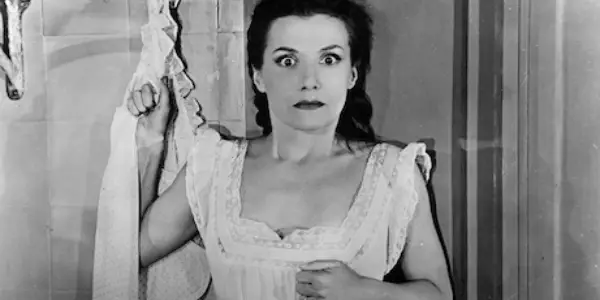Horrific Inquiry: LES DIABOLIQUES (1955)

Stephanie Archer is 39 year old film fanatic living in…
Welcome back to the newest, and at times goriest, column here at Film Inquiry: Horrific Inquiry. Twice a month, I will be tackling all things horror, bringing two films back into the spotlight to terrify and frighten once more. And occasionally looking at those that could have pushed the envelope further. Join us as we dive deep into the heart of horror, but warning, there will be spoilers.
Suspense. Thrills. Mystery. Three common words associated with horror classics of the post World War II era. While film noir took its hold on audiences, so too did horror through the form of psychological examinations and twisting mysteries that played with the mind. Where the name of Alfred Hitchc*ck became synonymous with this time period with his films Rebecca, Psycho, Rear Window, and Strangers on the Train (just to name a few), Les Diaboliques, from director Henri-Georges Clouzot, emulated the Hitchc*ckian feel, becoming its own inspiration as it captured a murder turned mystery.
Les Diaboliques is said to have been the script Alfred Hitchc*ck missed out on, Clouzot barely edging him out to obtain the rights to Boileau-Narcejac’s novel of the same name. Following the release of the film, comparisons would abound between it and the films of Hitchc*ck, the influences of Les Diaboliques seen heavily in the classic film Psycho. And the comparisons, especially with regards to Psycho, are not unfounded. From costume design to hair to the overall general aesthetic, Les Diaboliques would not only provide inspiration for the master of horror but for generations to come.
Crafting the Perfect Murder
Les Diaboliques opens to the swell of music and a children’s chorus as the opening credits flash by. The film is not in a rush to dive into the action, allowing viewers to settle into the initial feel. As the film does open, audiences are brought to the gates of a small all-boys boarding school as the arrival of a fish salesman brings comments of disgust and a bell ignites the excitement of the boys residing there. As the camera takes us through the halls, we are slowly introduced to the teachers of the school, two women, in particular, capturing the focus of the lens. As they speak, there is a sense of them speaking just above a whisper, a secret exchange made just below the surface of their words.

As viewers discover through the observations of their fellow teachers, their union is unique, a friendship born out of jealousy and betrayal – Christina (Véra Clouzot) the husband of Michel (Paul Meurisse), and Nicole (Simone Signoret) his mistress. The film trickles small subtleties about the conniving nature these leading ladies will drive the film towards. As the vacation weekend approaches, so does the diabolical plan Christine and Nicole are determined to enact.
As the two women sneak out of the boarding school and head to Niort, they call Michel upon their arrival, Christine begrudgingly calling her husband demanding a divorce. An abusive husband and lover, both Christine and Nicole have had enough. Michel is instantly infuriated boarding the next train to Niort to retrieve his wife and bring her home. Anxiously awaiting his arrival, the women prepare the apartment, dosing his whiskey with a sedative and preparing the bathtub. While Christine had asked for a divorce, the only true way the women saw out of the abusive relationship they found themselves in was to kill Michel.
And while you know both women will carry out their plan, there is a small chance they might not, Christine poised to back out at the last minute. This tug of war between will she or won’t she heightens the intensity of the film, especially as the moments for redemption and salvation constantly present themselves. While Christine might waver, Nicole is resolved to carry the murder out, acting as a support to Nicole and the pushing force to completion – both in the action itself and the carrying out of the perfect crime. As the women dump his body in the pool at the boarding school, all they can do now is wait for its discovery.

And wait they do. As you see each of the women begin to unravel, the body mysteriously disappears, evading discovery and a chance for the women to move on from their actions. Further spiraling with guilt, regret, and fear, Christine and Nicole begin to become haunted by the man they were so sure was dead. As the tux he was wearing arrives freshly pressed, his typewriter is used and one of the school students claims to have seen him, the unthinkable becomes undeniable.
Crafting the Perfect Classic
I honestly love Les Diaboliques. I had never seen it before this viewing, and it is a film I know boasts well for future viewings. The maintained tight aspect ratio of 1.37:1 plays well into the film, heightening the claustrophobic feeling of being discovered and being unable to run. But it is not just the aspect ratio. The cinematography too plays on the minds and emotions of audiences, heavy shadows foreboding to the mysteries just around the corner, threatening to close in on Christine at any moment.
Les Diaboliques is not a film rooted in gore. Most of the action happens off-screen and just to the side. The abuse inflicted on Christine is rarely seen, the most abusive moments shown are the ones that push Christine to follow through with the murder. Even the murder is subdued, Nicole pushing his hand under the water, little struggle given due to the sedatives and little viewing of the aftermath. Where the film does begin to turn the dial-up is in the inclusion of the body following the murder. The morning after, Michel is shown briefly in the bathtub before the women begin to move his body, his sunken eyes haunting both the characters and the audience.

Where the film shines in the terror is in the film’s final moments, the events of the film culminating into a terrifying display as Christine finally finds Michel’s body in the bathtub at the boarding school. As he opens his eyes and slowly lifts his body back to life, it is a horrific display of cinematic wonder, intrigue, and terror. Pulling the contact lenses from his eyes that cause the sunken nature of his expression to form, Michel reveals the true nature of the film to the audience, delivering both a terrifying and unforgettable conclusion.
Conclusion: Les Diaboliques
Les Diaboliques is a horror classic that is certain to continue to fascinate generations of cinephiles to come. Its intriguing and twisting story will keep you guessing, entertained, and horrified, all while showcasing the craftsmanship behind creating the perfect classic.
Have you seen Les Diaboliques? What did you think? Let us know in the comments below!
Watch Les Diaboliques
Does content like this matter to you?
Become a Member and support film journalism. Unlock access to all of Film Inquiry`s great articles. Join a community of like-minded readers who are passionate about cinema - get access to our private members Network, give back to independent filmmakers, and more.













